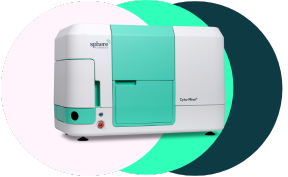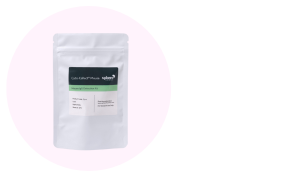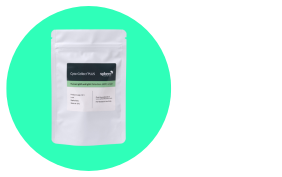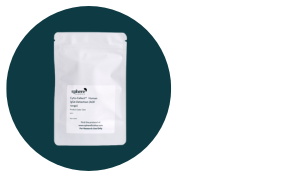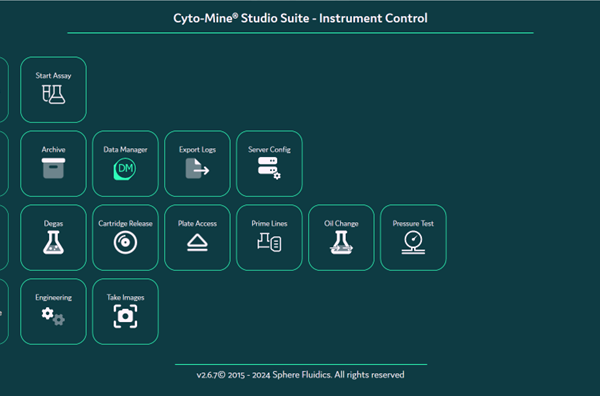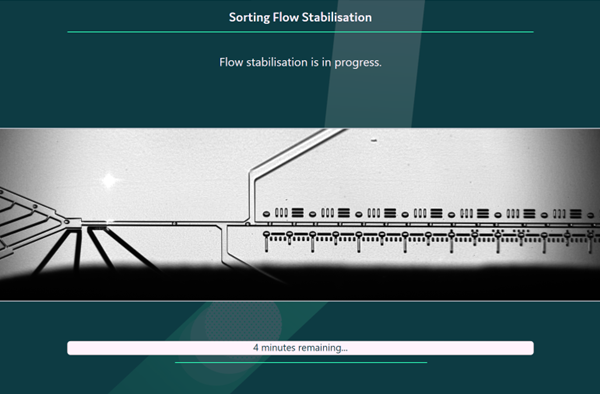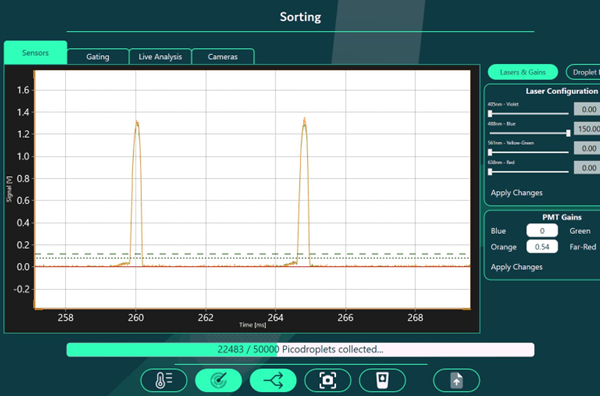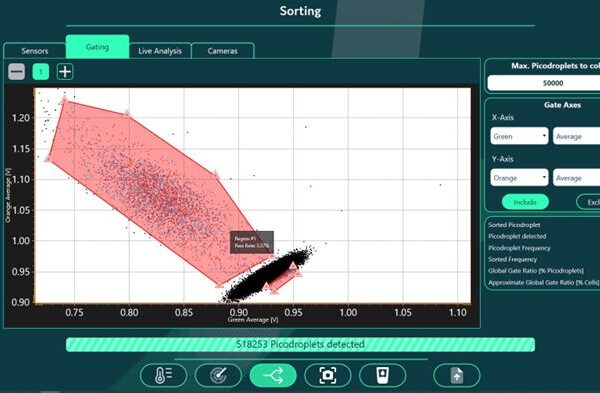How we work small
Explore the technology behind the future of science

Letting you think big needs advanced technology
Sphere Fluidics platforms are built on over a decade of scientific and engineering research and development. Originally spun out from the University of Cambridge, we specialize in multiple technical areas to deliver miniaturization – we work small so you can think big.
- Picodroplets, our ultra-miniature test tubes
- Droplet microfluidic biochips and fluid control
- Software for instrument control and data analysis
- Assays and workflows
Picodroplets
the core of our platforms
At the heart of our platforms are picodroplets. These are tiny droplets of aqueous fluid in an oil carrier fluid (‘single aqueous’), or an aqueous core surrounded by an oil shell in an aqueous carrier fluid ( ‘double aqueous’). Each picodroplet is used to encapsulate a cell. The chemistry of the emulsions is carefully designed to give long-term stable, biocompatible droplets with minimal leakage of molecules from the droplet, right down to small molecules such as metabolites. This provides an ultra-miniaturized test tube, containing media, reagents and cells, that allows large-scale experiments at the single cell level.

Microfluidic biochips
manipulating picodroplets
Picodroplets are made and manipulated using microfluidics. Our droplet microfluidic biochips provide all the functions needed to apply picodroplets to life science R&D: droplet generation (single or double emulsion), cell encapsulation in the droplets, incubation, splitting, reagent injection, sorting and dispensing of cells. All our biochips are designed in-house and operate seamlessly within the fluid control systems on our instruments. We offer both standard and custom biochips to support our customers and to carry out our own R&D work.

Software
simplifying complexity
Picodroplets are enabled by our software. The software allows user-friendly automation of the processes in our instruments – selecting and controlling multiple process parameters effortlessly with easy-to-use graphical interfaces. It provides rapid, accurate characterization and selection of cells in picodroplets whether with fluorescent markers or with imaging, often using AI techniques. And finally, it allows straightforward analysis and visualization of data to understand your results and make good scientific decisions.

Assays and workflows
making it work for you
Identifying the most valuable encapsulated cell in your sample needs a robust, reliable bioassay and workflow. We develop our own in-house assay kits optimized for the picodroplet environment. We also work with our customers to adapt and optimize their assays and workflows onto our platforms. We work with multiple cell types including mammalian suspension cells, mammalian adherent cells, and microbial cells. Picodroplets can support transfection and transduction workflows, plus proteome, genome, and transcriptome assays.

A technology with many applications
Picodroplets have a wide range of applications in many sectors:
Our technology in action in our products
Our Cyto-Mine® platforms integrate all our technical know-how into powerful, easy-to-use systems to support your scientific work. Instruments, reagents, assay kits, and droplet microfluidic biochips, we’ve got you covered.

